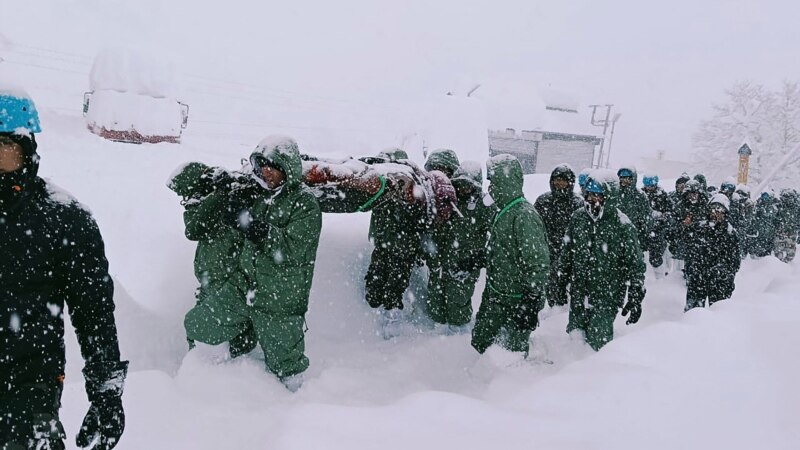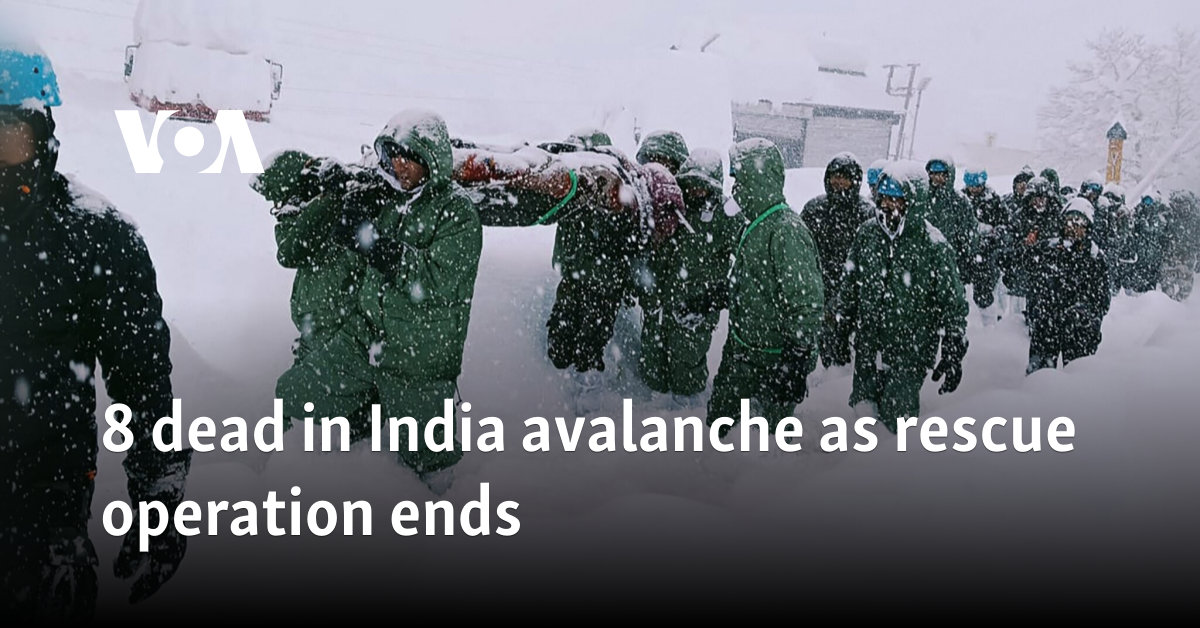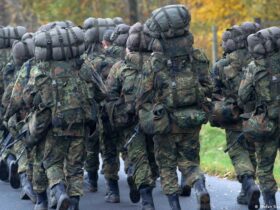
Rescuers recovered eight more final bodies from an avalanche site in a remote region in northern India, marking the end of the marathon operation in sub-zero temperature on Sunday.
More than 50 workers were drowned under snow and debris after hitting a construction near Maina village on the border on the border with Tibet in the Himalayan state of the Himalayas.
The authorities had revised the number of workers at the site at the time of avalanche from 55 to 54 after a worker, earlier it was believed that it was found, which was found that he had safely made the way home from his way.
The army used a drone-based identity system to assist in its search operations.
Multiple drone and a rescue dog were employed.
Construction worker Anil, who only gave his first name, recalled his rescue hours after being buried by avalanche.
“It was that if the angels of God came to save us,” Anil, who is in the late 20s, told AFP by phone from his hospital bed on Sunday.
“The way we were surrounded in snow, we had no hope of surviving.”
Blag Alave now felt like “a dream,” Heer said.
Not everyone made
Working on a project by the Border Rhodes Organization, workers were living on the site in steel containers, which were stronger than the tents and were capable with harsh weather.
Anil said that many activists were sleeping fast and some others were in the toilet, when the avalanche was killed around 6 local time.
As soon as the ground below him was shaken, the container which Anil and his colleagues were slide below.
“At first we did not understand what is happening but when we look out of the containers’ window, we saw a pile of snow all around,” said.
“The roof of containers that are slowly bending inwards.”
Everyone shouted for help and some people were lucky to get out of their containers.
“But not all of them excluded it and they were trapped,” Heer said.
Thunderly
His colleague Vipan Kumar thought that “this was the end” when he found that he found that he was struggling for air under a thick layer of snow.
“I heard a loud roar, such as a thunderous … everything got dark before I could react,” he told that times of India Newspaper.
At an altitude of more than 3.200 m (10,500 ft), the minimum temperature in the area was below minus 12 ° C (10 ° F).
Dhan Singh Bisht said that he and the nephew were alive only for quick action by the relief teams.
“I am grateful to him,” overwell Bisht told AFP by phone on Saturday.
The avalanche and landslides are common in the upper reach of the Himalayas, typical during the winter season.
Scientists say that climate change is making weather events more serious, while the increasing speed of development in delicate Himalayan regions has expressed apprehension about the decline of deforestation and construction.
In 2021, about 100 people died in Uttarakhand, when a huge glacier part fell into a river, causing flash floods.
And in 2013, the devastation monsoon floods and landlines killed 6,000 people and called for a reconstruction projects in the state.






Leave a Reply